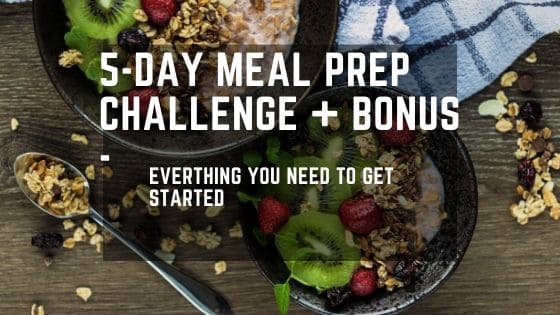Last Updated on February 24, 2024 by TheMealPrepNinja
Are you tired of spending hours in the kitchen every day, trying to figure out what to cook for your meals? Do you find it challenging to stick to a healthy diet because of your busy schedule? If so, meal prep and storage might be the solution you’ve been looking for.
In this beginner’s guide, I will walk you through everything you need to know about meal prep and storage. From easy meal prep ideas and essential containers to meal planning basics and efficient kitchen organization, you’ll discover how to save time, eat healthy, and enjoy delicious homemade meals throughout the week.
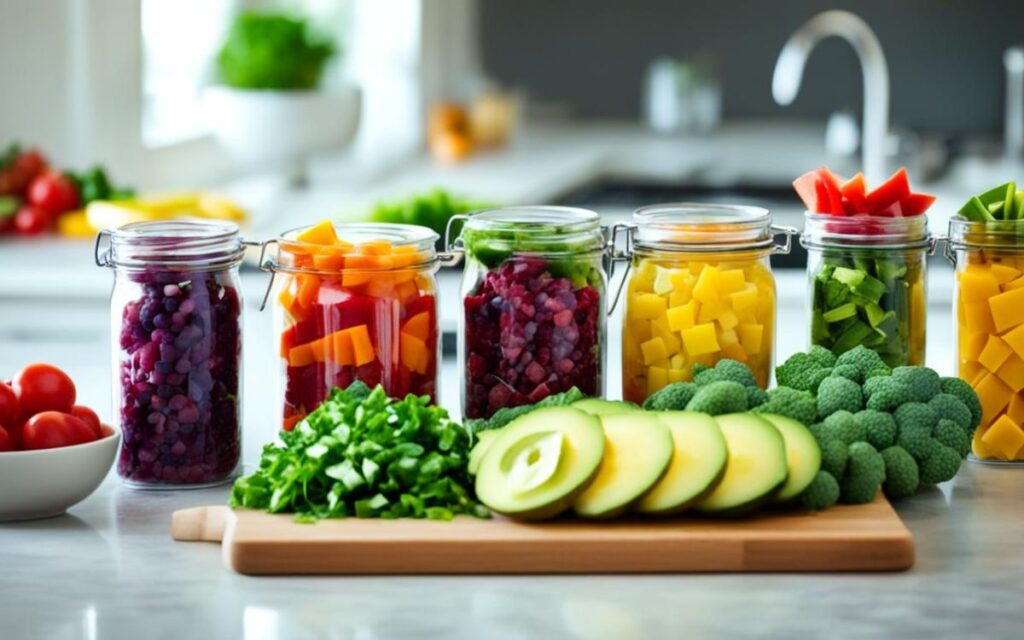
So, are you ready to take control of your meals and simplify your life? Let’s dive into the world of meal prep and storage together!
This post may contain affiliate links, which means we may receive a commission, at no extra cost to you, if you purchase through a link.
Understanding Meal Prep and Its Benefits
This section will introduce you to the concept of meal prep and its numerous benefits. You will learn how meal prepping can save you time and money by minimizing daily meal preparation and reducing food waste.
Additionally, you will discover the nutritional advantages of meal prep, including the ability to stick to a healthy diet and make mindful food choices. Regular meal preparation can also improve your culinary skills as you experiment with different recipes and flavors.
Time and Money Savings: The Efficiency of Meal Prepping
Meal prepping is a time-saving technique that involves planning and preparing your meals in advance, typically for a week or more. By dedicating a few hours each week to meal prep, you can eliminate the need to cook every day, saving valuable time. With prepped meals ready to go, you won’t have to worry about finding the energy or motivation to cook after a long day.
This efficiency extends to your grocery shopping as well. By planning your meals ahead of time, you can create a detailed grocery list, reduce impulse purchases, and stick to your budget, making meal prep a budget-friendly option.
Nutritional Advantages: Sticking to a Healthy Diet
One of the key benefits of meal prep is the ability to make healthy and nutritious choices consistently. When you plan and prepare your meals in advance, you have greater control over the ingredients and portion sizes.
This allows you to prioritize nutrient-dense foods, incorporate a variety of fruits and vegetables, and monitor your calorie intake. Meal prep also helps you avoid relying on unhealthy convenience foods or ordering takeout when you’re pressed for time. With prepped meals ready to go, you’re more likely to make mindful food choices and stick to your dietary goals.
Culinary Skills Improvement Through Regular Meal Preparation
Regular meal preparation provides an opportunity to hone your culinary skills and broaden your cooking repertoire. As you plan and prepare different meals each week, you can explore new recipes, experiment with flavors and ingredients, and develop your own signature dishes.
Over time, you’ll become more proficient in the kitchen, familiar with various cooking techniques, and confident in your ability to create delicious and nutritious meals. Meal prep offers a practical way to improve your culinary skills without feeling overwhelmed or stressed.
Essential Tools for Successful Meal Prepping
In order to have a smooth and efficient meal prepping experience, it is important to have the right tools and equipment at your disposal. These essential kitchen essentials and meal prep tools will make the process easier and more enjoyable. Here are some must-have items to stock your kitchen for meal prep:
“Having the right tools will make your meal prep experience efficient and enjoyable.”
| Tool | Description |
|---|---|
| 1. Chef’s Knife | A high-quality chef’s knife is a versatile tool for chopping, slicing, and dicing various ingredients. |
| 2. Cutting Board | A sturdy cutting board provides a safe and hygienic surface to prep your ingredients. |
| 3. Measuring Cups and Spoons | Accurate measuring cups and spoons ensure consistency in your recipes. |
| 4. Mixing Bowls | Durable mixing bowls are essential for combining ingredients and tossing salads or marinating. |
| 5. Skillet or Saute Pan | A skillet or saute pan is ideal for cooking proteins, vegetables, and stir-frying. |
| 6. Baking Dish | A baking dish is perfect for oven-baked meals and casseroles. |
| 7. Slow Cooker or Instant Pot | A slow cooker or Instant Pot can save you time and effort by cooking meals while you’re busy with other tasks. |
| 8. Food Storage Containers | Invest in a variety of airtight containers to store your prepped meals and maintain their freshness. |
In addition to these essential tools, having a reliable blender or food processor, a set of baking pans, and a quality non-stick skillet can expand your culinary options and make your meal prep even more versatile.
With these essential meal prep tools in your kitchen, you’ll be well-equipped to tackle any recipe and enjoy the benefits of efficient meal prepping.
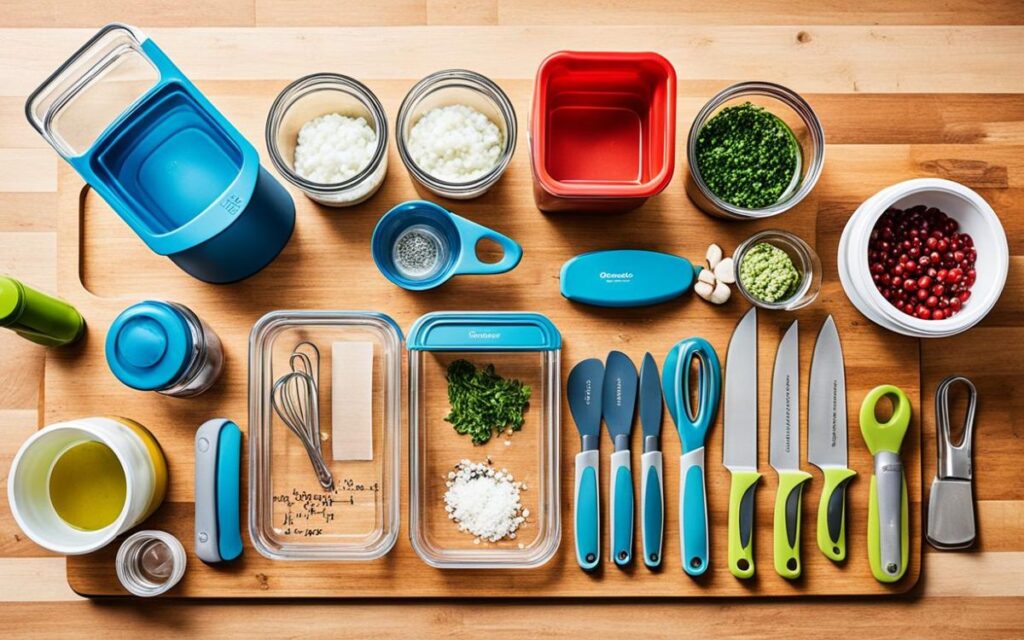
Choosing the Right Containers for Meal Storage
Proper meal storage is crucial for maintaining the freshness and quality of your prepped meals. When it comes to choosing the right containers, there are several factors to consider: material, airtightness, freezer compatibility, and container labels for food safety.
Comparing Plastic and Glass Options
Plastic and glass containers are the most common choices for meal storage. Plastic containers are lightweight, durable, and generally more affordable. They are also available in various sizes and shapes, making them convenient for meal prep. However, it’s important to choose food-grade, BPA-free plastic containers to ensure your food stays safe and free from harmful chemicals.
Glass containers, on the other hand, are a popular choice for their aesthetic appeal and the fact that they do not absorb odors or stains. They are also microwave-safe and can be used to reheat your meals without any concerns.
While glass containers may be slightly heavier and more expensive than plastic ones, they offer a sustainable and eco-friendly option.
Airtight Versus Freezer-Safe Containers
When searching for meal prep containers, consider whether you need them to be airtight or freezer-safe, depending on your specific storage needs. Airtight containers, such as those with snap-on or lockable lids, create a tight seal that helps to prevent air from entering the container, keeping your food fresher for longer. These containers are ideal for storing meals in the refrigerator or taking them on the go.
If you plan to freeze your prepped meals for future use, be sure to choose containers that are explicitly labeled as freezer-safe. Freezer-safe containers are designed to withstand low temperatures without cracking or breaking. They are typically made of materials such as plastic or tempered glass that can withstand freezing and reheating.
Deciphering Container Labels for Food Safety
When selecting meal prep containers, pay attention to the container labels for important information regarding food safety. I am no food expert but I do try to follow all of their guidelines. Look for labels that indicate the container is food-grade, microwave-safe, dishwasher-safe, and BPA-free. These labels ensure that the containers are suitable for storing and reheating your meals without compromising food safety.
Additionally, some containers may have labels indicating that they are leak-proof, stackable, or even portion-controlled. These features can provide added convenience and organization to your meal prep routine.
By considering the material, airtightness, freezer compatibility, and container labels, you can choose the right containers for your meal storage needs. Investing in high-quality meal prep containers will help you maintain the freshness, quality, and safety of your prepped meals.
Beginner’s Guide to Meal Prep and Storage
Welcome to the beginner’s guide to meal prep and storage! Whether you’re new to meal prep or looking for a refresher, this comprehensive guide will provide you with step-by-step instructions and valuable tips to help you succeed in your meal prep journey. From planning your meals and creating a grocery shopping list to preparing and storing your prepped meals, we’ll cover all the basics to get you started.
Step 1: Planning Your Meals
To begin the meal prep process, take some time to plan the meals you want to prepare. Consider your dietary preferences, nutritional needs, and any specific goals you may have, such as weight loss or muscle gain. Plan a variety of meals to ensure a balanced diet throughout the week.
Step 2: Creating a Grocery Shopping List
Once you’ve planned your meals, create a grocery shopping list to ensure you have all the necessary ingredients. Take inventory of your pantry and fridge, and jot down the items you need to purchase. Organize your list by sections such as produce, meat, dairy, and pantry staples to make your trip to the grocery store efficient.
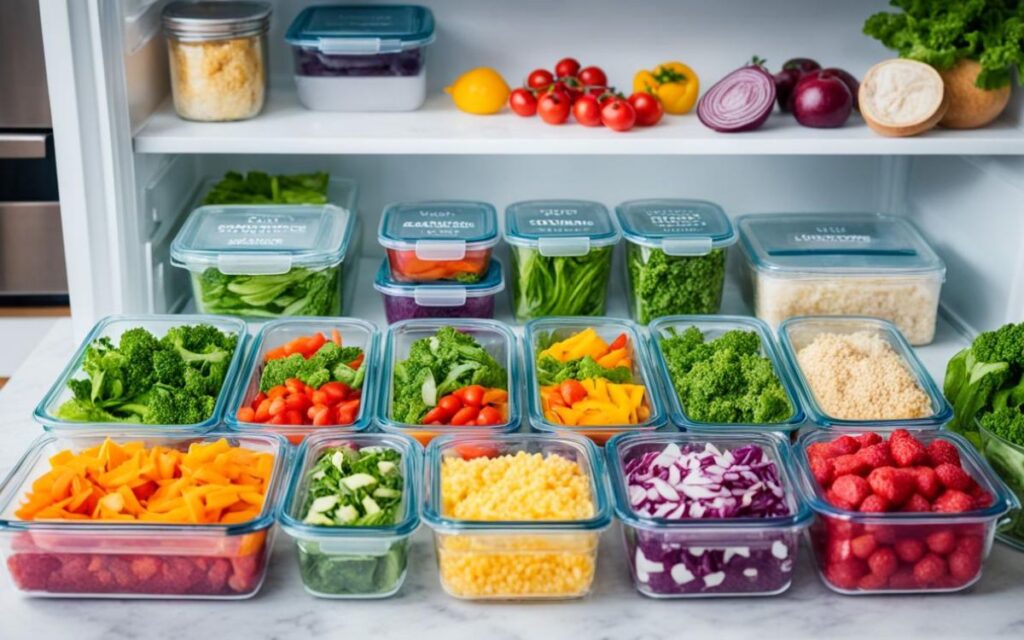
Step 3: Preparing Your Meals
Set aside a dedicated time for meal prep, such as a weekend or a free evening. Start by washing and chopping your fruits and vegetables, cooking proteins, and preparing grains or starchy sides. Portion your meals into individual containers, making sure to include a balance of protein, carbohydrates, and vegetables.
Step 4: Storing Your Prepped Meals
Proper storage is essential to keep your prepped meals fresh and safe to eat. Use meal prep containers that are freezer-safe, microwave-safe, and leak-proof. Store your meals in the refrigerator for up to 4 days or in the freezer for longer-term storage. Label your containers with the name of the dish and the date to ensure freshness and easy identification.
Step 5: Enjoying Your Prepped Meals
When it’s time to enjoy your prepped meals, simply reheat them in the microwave or oven, following proper food safety guidelines. Remember to thaw frozen meals in the refrigerator overnight before reheating. Sit back, relax, and savor the convenience of having delicious, homemade meals ready to enjoy throughout the week.
With this beginner’s guide to meal prep and storage, you’ll have the knowledge and confidence to start your journey toward a more organized and efficient approach to meal preparation. By planning your meals, creating a shopping list, and preparing and storing your meals properly, you’ll save time and effort while enjoying nutritious and delicious homemade meals.
Creating Your Meal Prep Grocery Shopping List
A well-planned grocery shopping list is essential for successful meal prep. In this section, I will guide you through the process of creating a meal prep grocery shopping list. By following these guidelines, you can ensure that you have all the necessary ingredients for your meal prep sessions.
Stocking Up on Pantry Staples
When creating your meal prep grocery shopping list, it’s important to stock up on pantry staples. These are non-perishable items that you can keep on hand for extended periods and use in various recipes. Some common pantry staples include:
- Rice and grains
- Dried beans and lentils
- Canned vegetables and fruits
- Spices and seasonings
- Oils and vinegars
- Flour and baking essentials
Having a well-stocked pantry will make it easier to create meals on the go and minimize last-minute trips to the grocery store.
Fresh Ingredients and Seasonal Produce Shopping
In addition to pantry staples, fresh ingredients and seasonal produce are essential for meal prep. When selecting fresh ingredients, aim for quality and freshness. Look for ripe fruits and vegetables, and check for signs of spoilage or wilting.
Shopping for seasonal produce not only ensures optimal flavor but also supports local farmers and reduces your carbon footprint. Seasonal produce is often less expensive and more readily available. Some examples of seasonal produce include:
- Spring: Asparagus, strawberries, peas
- Summer: Tomatoes, corn, watermelon
- Fall: Pumpkins, apples, squash
- Winter: Brussels sprouts, citrus fruits, kale
By incorporating fresh, seasonal produce into your meal prep, you can enjoy the best flavors and nutritional benefits.
Organizing Your List to Maximize Time at the Store
To maximize efficiency and minimize time spent at the store, it’s important to organize your meal prep grocery shopping list. By following these tips, you can streamline your shopping experience:
- Plan your meals for the week ahead to determine the ingredients you’ll need.
- Categorize your list by sections, such as produce, dairy, meat, etc., to navigate the store more efficiently.
- Group similar items together to easily locate them, such as all the vegetables or spices.
- Consider the layout of your grocery store and organize your list accordingly to minimize backtracking.
- Take advantage of digital tools, such as meal planning apps or grocery list apps, to stay organized and save time.
By organizing your meal prep grocery shopping list, you can streamline your shopping experience and make the most of your time at the store.
Creating a well-planned meal prep grocery shopping list that includes pantry staples, fresh ingredients, and seasonal produce will set you up for success in your meal prep journey. With an organized list in hand, you can efficiently navigate the store, ensuring you have all the necessary ingredients to create delicious and nutritious meals.
Effective Strategies for Batch Cooking
If you want to save time and simplify your meal prep routine, batch cooking is the way to go. This meal prep strategy involves cooking larger quantities of food at once, allowing you to portion and store meals for later use. By dedicating a few hours to batch cooking, you can have multiple meals ready to go throughout the week, saving you both time and effort.
Here are some effective strategies for successful batch cooking:
- Plan Ahead: Before you start batch cooking, take some time to plan your meals. Choose recipes that are suitable for batch cooking and make a grocery list of all the ingredients you’ll need.
- Select Recipes Wisely: Opt for recipes that can easily be scaled up and can withstand being reheated. Soups, stews, casseroles, and roasted meats and vegetables are great options for batch cooking.
- Maximize Your Time: Use time-saving cooking techniques like using a slow cooker, pressure cooker, or sheet pan cooking. These methods allow you to cook large quantities of food with minimal effort.
- Divide and Conquer: Once your meals are cooked, divide them into individual portions using meal prep containers. This makes it easier to grab a ready-made meal whenever you’re hungry.
- Label and Date: To keep track of your batch-cooked meals, label each container with the name of the dish and the date it was cooked. This will help you identify meals that need to be consumed first.
- Storage is Key: Store your batch-cooked meals in the refrigerator or freezer, depending on when you plan to eat them. Use airtight containers or freezer-safe bags to maintain freshness and prevent freezer burn.
By following these strategies, you can make the most out of your batch cooking sessions and ensure that you always have delicious and nutritious meals on hand.
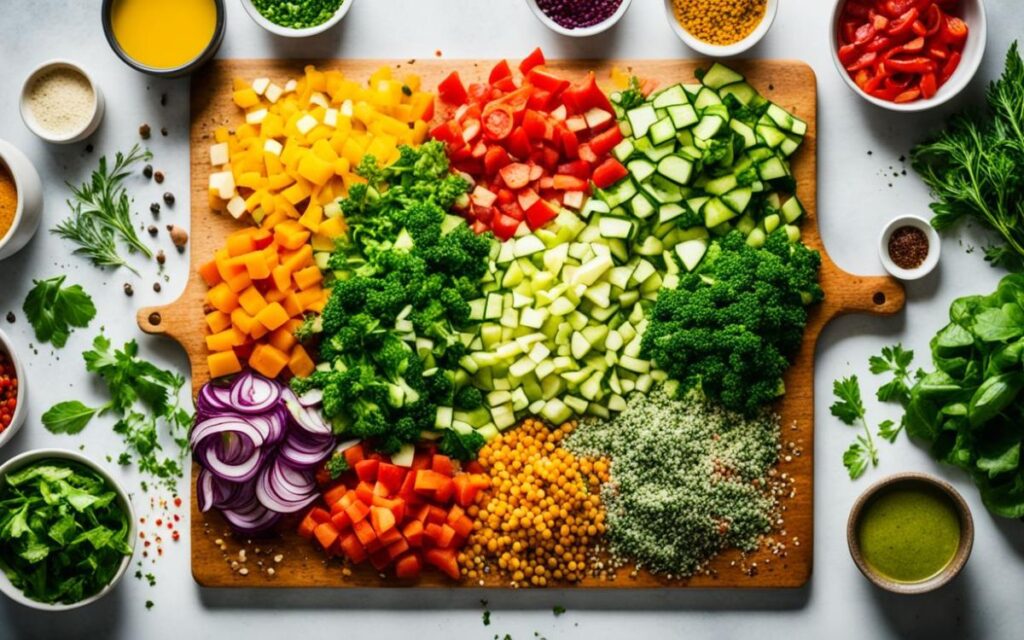
Maximizing Freshness with Proper Food Storage
Proper food storage is essential for maintaining the freshness and quality of your prepped meals. By following best practices and utilizing the right storage methods, you can ensure that your meals stay delicious and safe to consume.
Fridge Versus Freezer: Knowing Where to Store Your Meals
When it comes to meal storage, understanding whether to use the fridge or the freezer is key. Both options have their advantages and it’s important to know which one is right for different types of meals.
The fridge: The fridge is ideal for storing meals that you plan to consume within a few days. It keeps the meals cool and slows down the growth of bacteria, helping to maintain freshness. However, keep in mind that certain foods, such as meats and dairy products, have shorter shelf lives in the fridge and need to be consumed sooner.
The freezer: The freezer is perfect for longer-term storage. It preserves the freshness of meals by preventing the growth of bacteria and slows down the process of spoilage. Freezing can extend the shelf life of prepped meals for several months. However, some foods may not freeze well, such as salads or foods with high water content, as they can become mushy after thawing.
The FIFO Approach: Organize for Optimal Freshness
The FIFO (First-In, First-Out) approach is a simple but effective method for organizing your prepped meals in the fridge or freezer. By arranging your meals according to their storage date, you ensure that older meals are consumed first, minimizing food waste and maximizing freshness.
To implement the FIFO approach, place the newest meals at the back of the fridge or freezer and bring the older ones to the front. This way, you’ll always be aware of the meals that need to be consumed first, reducing the chances of forgetting about them and letting them go to waste.
Labeling Tips for Tracking Your Prepped Meals
| Preview | Product | Price | |
|---|---|---|---|

|
QSRProducts Removable Day Label - 1 inch - Peel Tab - Week (Mon-Sun) (7000 Stickers) - Food and... |
$29.99 |
Buy on Amazon |
Labeling your prepped meals is a crucial step in meal storage and tracking. Properly labeled meals help you identify what’s inside each container, its storage date, and any reheating or consumption instructions.
When labeling your prepped meals, be sure to include the following information:
- Meal name or description
- Date of preparation
- Any specific instructions for reheating or consumption
Having clear labels not only helps you easily locate specific meals but also ensures that you use them within their recommended timeframe. Use waterproof and freezer-safe labels or markers that won’t fade or smudge with time.
By implementing these storage practices, you can ensure that your prepped meals stay fresh and delicious, maximizing their shelf life and minimizing food waste.
| Storage Method | Ideal For | Benefits |
|---|---|---|
| Fridge | Meals to be consumed within a few days | – Slows down bacteria growth |
| Freezer | Long-term storage | – Prevents bacteria growth – Extends shelf life |
The Importance of Food Safety in Meal Prep
Food safety is a crucial aspect of meal prep that should never be overlooked. Proper sanitation practices, cross-contamination prevention, and appropriate guidelines for refrigerating and freezing prepped meals are essential for maintaining the safety and quality of your food.
Sanitation Basics: Handwashing and Surface Cleaning
One of the fundamental aspects of food safety in meal prep is maintaining proper sanitation. This includes regular handwashing before and during the meal preparation process. Washing your hands with soap and warm water for at least 20 seconds helps eliminate bacteria and other contaminants.
Additionally, it is important to clean and sanitize all surfaces and utensils used during meal prep. This prevents the spreading of bacteria and ensures hygienic conditions for food preparation.
Avoiding Cross-Contamination Between Foods
Cross-contamination occurs when harmful bacteria from one food item are transferred to another. To avoid cross-contamination, it is crucial to keep different food items separate during meal prep. Use separate cutting boards, knives, and other utensils for raw meats, fruits, vegetables, and other ingredients. This will help prevent the spread of bacteria and reduce the risk of foodborne illnesses.
Guidelines for Refrigerating and Freezing Prepped Meals
Proper refrigeration and freezing of prepped meals are essential for maintaining their freshness and safety. Follow these guidelines:
- Refrigeration Guidelines:
- Ensure your refrigerator is set to a temperature of 40°F (4°C) or below to slow down bacterial growth.
- Store cooked meals in airtight containers or resealable bags within two hours of cooking.
- Label and date your prepped meals to keep track of their freshness.
- Consume refrigerated meals within 3-4 days to ensure their safety and quality.
- Freezing Guidelines:
- Use freezer-safe containers or bags to store prepped meals for longer-term storage.
- Label and date your frozen meals for easy identification and rotation.
- Consume frozen meals within 3-4 months for optimal quality.
- Thaw frozen meals in the refrigerator overnight or using the defrost function on your microwave.
Following these guidelines for food safety in meal prep will help ensure that your prepped meals are safe, delicious, and free from harmful bacteria. By practicing proper sanitation, preventing cross-contamination, and adhering to refrigeration and freezing guidelines, you can enjoy your meals with peace of mind.
Simple Meal Prep Recipes for Beginners
In this section, I will provide you with a collection of simple and beginner-friendly meal prep recipes that are perfect for getting started on your meal prep journey. These recipes are designed to be easy to prepare, delicious, and nutritious, ensuring that your meal prep experience is enjoyable and hassle-free.
Whether you’re looking for breakfast options, lunch ideas, or dinner recipes, you’ll find a variety of dishes to suit your taste and dietary needs. These recipes will serve as inspiration for your meal prep routine, helping you build a repertoire of go-to meals that are both satisfying and convenient.
blockquote
“Meal prep doesn’t have to be complicated or time-consuming. With these simple recipes, you can prepare wholesome meals ahead of time and save yourself from the stress of cooking every day.”
Here are a few beginner-friendly meal prep recipes to get you started:
- Overnight Oats: A quick and easy breakfast option, overnight oats can be prepared the night before and enjoyed in the morning. Simply combine oats, milk or yogurt, your choice of fruits and toppings, and let them sit in the fridge overnight. In the morning, you’ll have a delicious and nutritious breakfast ready to go!
- Chicken and Vegetable Stir-Fry: This simple stir-fry recipe is packed with protein and veggies, making it a balanced and satisfying lunch or dinner option. Prepare a batch of cooked chicken breast, sauté your favorite vegetables, and toss them together with a flavorful stir-fry sauce. Divide into portioned containers for a quick and delicious meal throughout the week.
- Quinoa Salad: Quinoa salads are not only nutritious but also versatile. Cook quinoa and let it cool, then mix in your choice of vegetables, herbs, and dressings. You can customize the salad with ingredients such as cherry tomatoes, cucumbers, feta cheese, and a simple lemon vinaigrette. Portion the salad into containers and enjoy it as a light and refreshing lunch or side dish.
- Turkey Meatballs with Roasted Vegetables: These flavorful turkey meatballs are a great option for meal prep. Combine ground turkey, breadcrumbs, herbs, and spices to form the meatballs. Bake them in the oven along with a variety of colorful roasted vegetables, such as sweet potatoes, bell peppers, and zucchini. This recipe provides a delicious and well-rounded meal that can be enjoyed for lunch or dinner.
These recipes are just a starting point, and you can customize them to suit your preferences and dietary restrictions. Feel free to experiment with different ingredients, flavors, and cooking techniques to create your own simple and delicious meal prep recipes.
Next, we will conclude our beginner’s guide to meal prep and storage, summarizing the key takeaways and highlighting the importance of incorporating meal prep into your daily routine. Don’t forget to check out this article on gluten-free meal prep for beginners.
| Recipe | Prep Time | Cook Time | Total Time |
|---|---|---|---|
| Overnight Oats | 5 minutes | 0 minutes | 5 minutes |
| Chicken and Vegetable Stir-Fry | 15 minutes | 15 minutes | 30 minutes |
| Quinoa Salad | 10 minutes | 15 minutes | 25 minutes |
| Turkey Meatballs with Roasted Vegetables | 20 minutes | 30 minutes | 50 minutes |
Here are a few extra simple recipes from my website recipes:
Healthy Burrito Bowl Meal Prep Ground Chicken Recipe
Healthy Spicy Chipotle Shrimp Bowl Meal Prep Recipe
Conclusion
In conclusion, meal prep and storage are essential practices for anyone looking to streamline their meal planning, save time and money, and maintain a healthy diet. Throughout this beginner’s guide, we have covered key takeaways that will help you succeed in your meal prep journey.
One of the main benefits of meal prep is the efficiency it brings to your daily routine. By dedicating a few hours each week to prepping and storing your meals, you can significantly reduce the time spent on cooking and cleaning during busy weekdays. This allows you to enjoy more free time and eliminates the stress of deciding what to eat each day.
Additionally, meal prep provides you with the opportunity to make nutritious choices. By planning your meals, you can ensure that they are well-balanced and tailored to your dietary needs. With the right tools and containers, you can safely store your prepped meals and have them readily available whenever hunger strikes, reducing the temptation to resort to unhealthy options.
Remember, successful meal prep relies on proper tools and containers, efficient batch cooking strategies, effective food storage techniques, and adherence to food safety practices. By following these guidelines, you can reap the benefits of meal prep, enjoy delicious and nutritious meals, and take control of your eating habits. So, start meal prepping today and discover the convenience and rewards it brings to your life! If you need more information, check out this article for meal prep for beginners guide.
FAQ
What are the benefits of meal prep and storage?
Meal prep and storage can save you time and money by minimizing daily meal preparation and reducing food waste. It also allows you to stick to a healthy diet and make mindful food choices. Regular meal preparation can improve your culinary skills as well.
What tools do I need for successful meal prepping?
Essential tools for meal prepping include knives, cutting boards, measuring cups, skillets, pots, and other kitchen utensils. Stocking your kitchen with these items will make your meal prep experience efficient and enjoyable.
What types of containers should I use for meal storage?
You can choose from plastic and glass containers for meal storage. Each type has its benefits and considerations. It’s important to select airtight and freezer-safe containers and read container labels for food safety.
How do I start meal prepping as a beginner?
To start meal prepping, you should plan your meals, create a grocery shopping list, prepare and store your prepped meals. This guide will provide you with step-by-step instructions and tips for successful meal prep.
What should I include in my meal prep grocery shopping list?
Your grocery shopping list for meal prep should include pantry staples, fresh ingredients, and seasonal produce. Organizing your list and maximizing efficiency while shopping can help you have all the necessary ingredients for your meal prep sessions.
What is batch cooking, and how can I implement it in my meal prep?
Batch cooking involves cooking larger quantities of food to be portioned and stored for future meals. Effective strategies for batch cooking include time-saving cooking techniques and selecting recipes that are suitable for cooking in bulk. This allows you to maximize your time in the kitchen and prepare multiple meals at once.
How should I store my prepped meals to maximize freshness?
Proper meal storage is crucial for maintaining the freshness and quality of your prepped meals. Learn when to use the fridge versus the freezer, use the FIFO approach to organize your meals, and label your prepped meals for tracking and easy identification.
What are the important food safety practices in meal prep?
Proper sanitation practices, such as handwashing and surface cleaning, are vital in meal prep. You should also avoid cross-contamination between different foods and follow guidelines for refrigerating and freezing prepped meals to ensure food safety and prevent foodborne illnesses.
Can you provide some simple meal prep recipes for beginners?
Yes! We offer a collection of simple and beginner-friendly meal prep recipes, ranging from breakfast options to lunch and dinner ideas. These recipes are easy to prepare, delicious, and nutritious, providing you with inspiration for your meal prep journey.
Jim Lopez, the founder and editor of The Meal Prep Ninja, shares his journey from a passionate bodybuilder and fitness enthusiast to a certified nutrition coach. Certified by Precision Nutrition, Jim aims to empower others with knowledge on meal prep and nutrition, offering resources for busy individuals to enjoy low-calorie, tasty foods. His blog is a community for sharing healthy eating habits and meal prep recipes

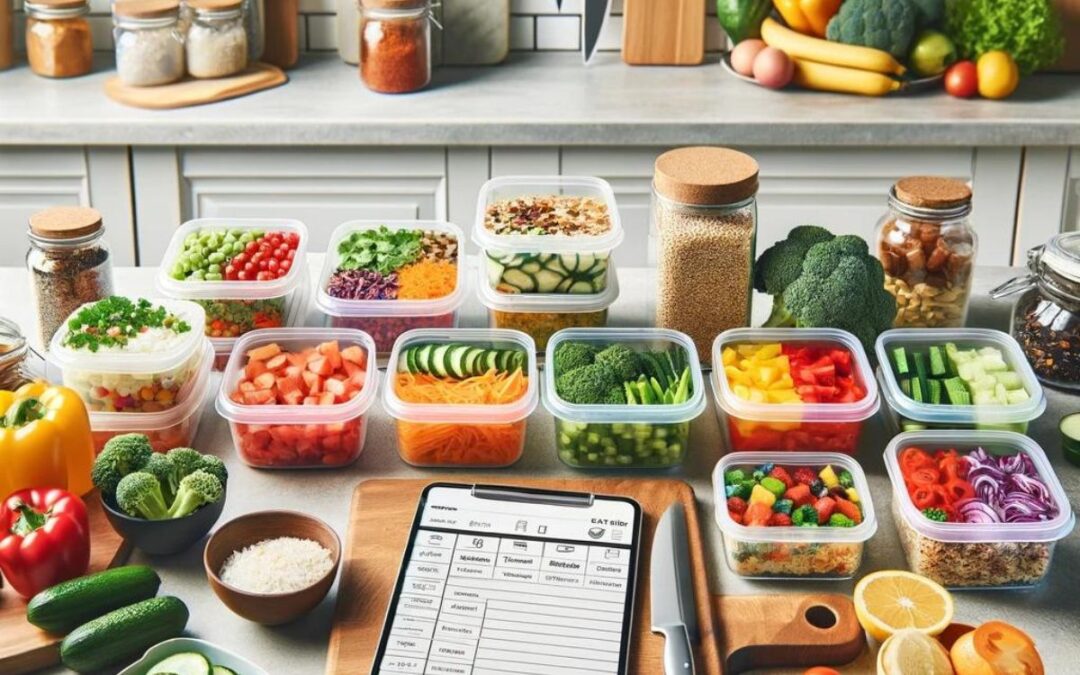

![Freshware Meal Prep Containers [15 Pack] 1 Compartment Food Storage Containers with Lids, Bento Box, BPA Free, Stackable, Microwave/Dishwasher/Freezer Safe (28 oz) Black](https://m.media-amazon.com/images/I/416Upq0nEJL._SL160_.jpg)


